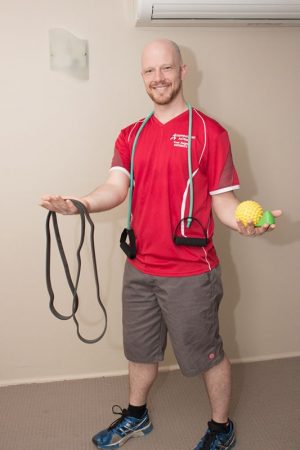Stretching
Learn different versions of stretching
to get the length back in your muscles
So let’s get to stretching out your bodies.
First and foremost, stretching is a great thing but it is not the cure-all to all of the bodies problems. It is best to incorporate stretching with strengthening and mobilising techniques to develop good strength, flexibility and mobility of the joints.
Stretching is most commonly used to improve the length of muscles and other soft tissues. Stretching works on soft tissues; muscle, fascia, ligaments, tendons and joint capsules. It works via a soft tissue property called creep, which state that a sustained pulling force will cause the soft tissue to deform (which in this case will cause it to lengthen, which is a good thing right?) Stretching is done by moving one muscle attachment point away from another, simple!
There is always conjecture over what type of stretching to use and when. I believe stretching is most effective when using the most appropriate stretching method for what you are aiming to achieve and stretching at the most appropriate time.
That gets me to the point of this introduction: what are the types of stretching and when are they best to use.
Static Stretching
This is the traditional style of stretching that most people know about where muscle/s are taken to stretch and held for a specific length of time.
You can do many different variations here. You could hold 2-3 x 10-30 second stretches or you could do 10+ x 3 second stretches. You could even do some stretches like in some forms of yoga where the stretch is held for minutes at a time.
My thoughts here are that the longer the hold/the less repetitions in the stretch makes it more of a cool-down/recovery stretch. The shorter and more frequent the stretch the more it is suitable for pre-event (after dynamic warm-ups are done)
Pin & Stretch
I do this technique ALOT in my clinic when I find muscular tightness, which is just about every massage session I do.
The basic idea is to find tension within a muscle, pin it down by pushing against it with something like a massage ball or foam roller and then you move the muscle into a stretch position. Thus, pin and stretch.
Most of the foam rolling videos describe pin and stretch and give good examples of how to perform this great form of stretching.
Contract relax/Agonist contract
These forms of stretching require you to perform specific muscle activations during the stretch. I will add a detailed video to guide you through these as they are more advanced than the others listed above.
Cautions
Please be sensible when stretching. Think about what you are trying to achieve, you want to either slowly encourage the soft tissue to change and lengthen. If you go to cowboy in your stretching and stretch too hard, too fast, or too far, you may very well hurt yourself. You have been warned!
If you have a new injury with any sharp or burning pain, you most likely have some soft tissue damage or worse! Do you think pulling apart damaged tissue is a good thing? I don’t, so please refrain from stretching in this case, you are only going to make thing worse.
I know this was a wall of text, it’s just that most people will say they know how to stretch but they really have no idea. Now you have a better understanding so get too it!
Welcome to the self assessment section.
Not all exercises indicated in these videos are currently available, but rest assured they will be!
Learn how to stretch out your hamstrings in a standing position.
In this video i demonstrate how to perform contract-relax (CR) and agonist-contract (AC) stretching. These stretching methods can be adapted to most stretching positions
If you sit at a desk all day and get tight in the upper back and neck, try this!
Stretching your chest will help you sit more upright and relieve back and neck tension
In this video Trent shows you multiple ways to stretch out a tight chest, both on the floor and on a foam roller.
I have created this video to establish the “red flags” or warning signs when stretching the neck (or preforming any activities involving the neck)
In this video Trent shows you some very important stretching tools for a rarely stretched neck region – the front of the neck.
Trent shows you side neck stretching in-depth.
Get that ear down to your shoulder
Stretching the back of the neck can be great, when it is done well.
Make sure you watch this to learn how to vary your angles and directions to get the best our of your neck stretching.
This video shows how to stretch the back in a seated position.
Great for stretching the full length of the back without engaging the hamstrings.
Stretch out the muscles of the torso, these include muscles in your sides, lower back and upper back.
The chest muscles are covered in the floor foam roller stretches video.


